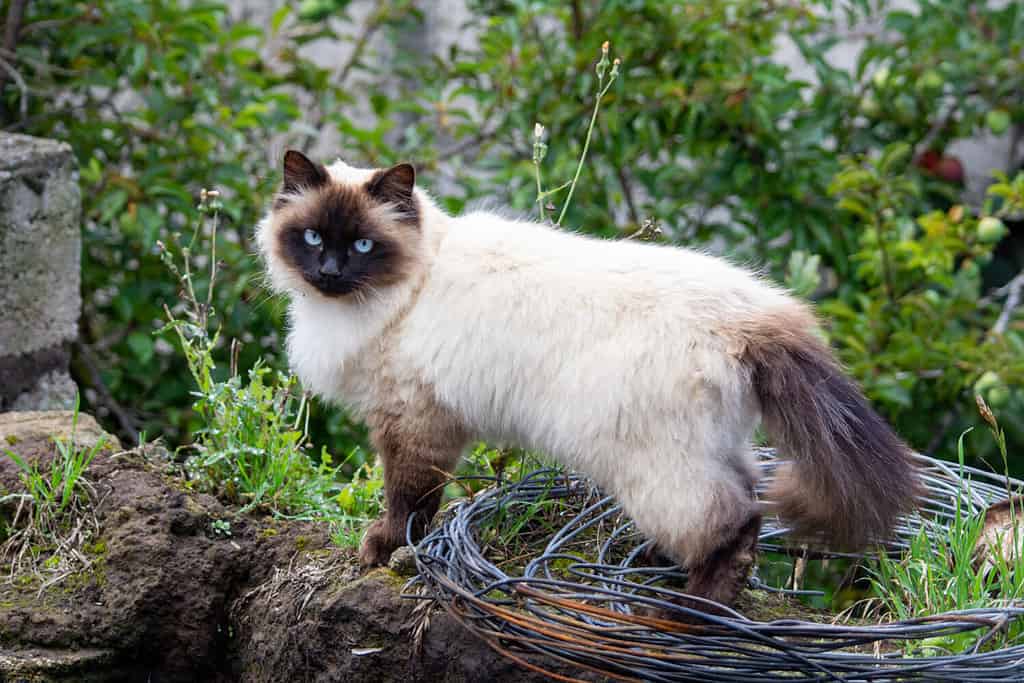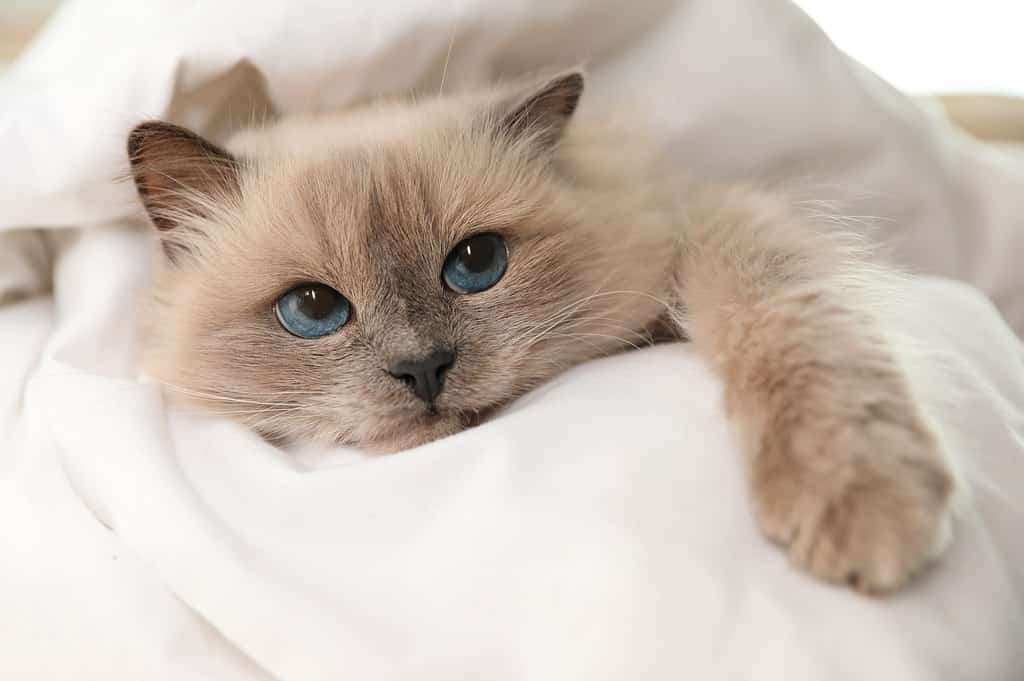Birman and Himalayan cats both have the same gorgeous, silky coats. Their long, fluffy fur is just inviting cuddles! It can often be hard to choose between them. However, there are some key differences between a Birman cat vs. a Himalayan.
1. Birman Cat vs. Himalayan: Appearance
While these cats do look somewhat similar, they also vary in appearance in a few key points. Appearance should not be your main deciding factor when choosing a cat breed, but understanding these differences can help you tell them apart. Plus, their appearance has a huge influence on their grooming needs and health considerations.
Coat
Birmans have a medium-long coat that’s very silky. Luckily, though, it isn’t terribly prone to matting. Himalayans have a longer, denser coat that is prone to matting, though. They require more brushing for this reason.
Pattern
Both of these cats have a point coloration. Simply put, this means that their extremities are darker than the rest of their body. Their feet, tail, and face tend to have the darkest colors.
However, the exact colors that each breed comes in vary. Birman cats have more colors, including red, while Himilayans come in fewer.
Features
Birman cats have a more traditional feline face. They have pretty round eyes and a short snout. On the other hand, Himalayans have flat faces with very wide eyes. They also have snort snouts that resemble a pug.
For this reason, Himalayans can experience some breathing problems.
2. Birman Cat vs. Himalayan: Temperament

Due to their lazier nature, Himalayan cats are more prone to obesity than other breeds.
©ecuadorplanet/Shutterstock.com
Birman cats are known for being very social and playful. They bond closely with their families and tend to get along with children and other pets. They’re friendly with just about everyone – strangers included.
On the other hand, Himalayans tend to be a bit more reserved. They still like to cuddle, but it isn’t odd for them to pick one person and follow them around. They tend to be calm and gentle. Expect a Himalayan to be less playful than a Birman.
If you want a cat that’s just going to sit in your lap, a Himalayan is probably the best choice. However, if you’re looking for a cat to get along with your children and everyone else in your family, a Birman may be the better option.
3. Birman Cat vs. Himalayan: Health
Birmans are a very healthy breed that rarely experiences any health problems. Of course, they can get the same diseases and illnesses as other cats, but congenital and genetic problems are rare.
On the other hand, Himalayans do experience health problems due to their shortened snouts. They cannot breathe as well as other cats, so they’re more prone to respiratory problems, heat stroke, and similar issues. They’re also more prone to dental problems for the same reason.
Himalayans also have very large eyes, which makes them more prone to eye problems. Their eyes are more likely to become scratched and damaged, as they just aren’t as protected as most cats’ eyes.
While Birman cats are mostly prone to curable conditions, the breathing and eye problems of the Himalayan cannot be cured. These are innate in how the cat is bred. To remove these problems would be to change a Himalayan’s features completely.
4. Birman Cat vs. Himalayan: Care

It isn’t hard to see why so many people fall in love with Birman Cats – they’re just so cute!
©Liudmila Chernetska/Shutterstock.com
Birman cats require only a small amount of care, as they’re decidedly low-maintenance compared to many other cat breeds. Typically, you can expect to brush them around two to three times per week. This brushing session prevents matting and helps lower the amount of fur that ends up on your furniture.
These felines do shed more about twice a year. During this period, you may want to increase brushing to four times a week, depending on exactly how much your cat is shedding.
On the other hand, Himalayans require daily brushing to prevent matting. Their coats are very thick and prone to developing tangles. There isn’t anything you can do to limit this brushing, either. Their dense double coat is just a bit too thick.
They also shed like Birman cats, but their denser fur typically means that more ends up around your home. Once again, brushing will help with this, but it won’t eliminate it completely. Don’t purchase a Himalayan if you can’t handle some cat hair.
Birman cats tend to be more active than Himalayans. You should plan on playing with your Birman cat daily, investing in plenty of toys and climbing structures for them to explore. However, Himalayan cats tend to be a bit too lazy, leading to obesity. We highly recommend trying to play with your Himalayan, too, even if they likely won’t be as active as a Birman.
The photo featured at the top of this post is ©
Thank you for reading! Have some feedback for us? Contact the AZ Animals editorial team.







